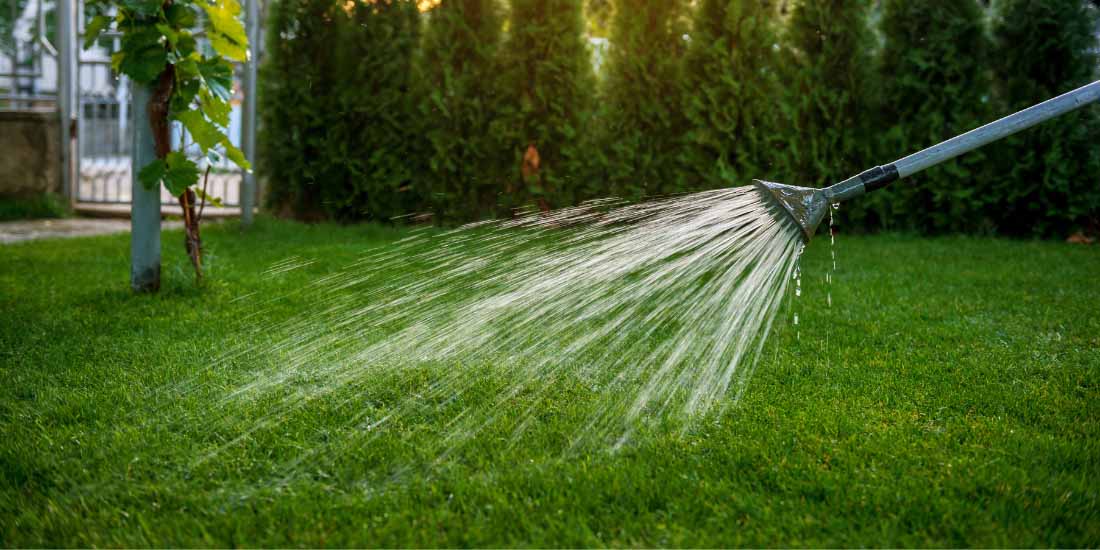How to revive dead grass

Tips on how to revive dead grass
Before taking any action on how to revive dead grass, it’s crucial to evaluate the condition of your lawn and determine the underlying cause of its decline. Is it due to lack of water, poor soil quality, excessive thatch, disease, or pests? Identifying the problem will help you tailor your approach for the best results.
Remove thatch, moss and weeds
Thatch is a layer of dead grass and organic debris that accumulates between the soil and the living grass. Excessive thatch can suffocate your lawn by blocking essential nutrients and water absorption. Using a thatch rake or a specialised dethatching machine removes the layer of thatch. You should also manually remove any weeds or invasive plants competing with your lawn for nutrients and space. Moss will also stint your grass’ growth and needs to be removed. This can be done using a rake to scarify it or by using a Feed, Weed & Mosskiller if it’s affecting a larger area.
Aerate the soil to let your lawn breathe
Compacted soil restricts water, air, and nutrient movement to the grassroots. Aerate the soil using a garden fork or a mechanical aerator. This process creates small holes in the soil, allowing better circulation and root development.
Repair patchy areas by overseeding
Overseeding is the process of spreading new grass seeds over your existing lawn. Before overseeding, gently rake the soil to create a seed bed and improve seed-to-soil contact. Then, apply the grass seeds evenly 50g per m2, using a seed spreader or by hand, and then water it to keep the soil moist for the six weeks that follow.
Encourage growth by keeping the soil moist
Watering is important for the recovery of your lawn! After overseeding, keep the soil moist but not soaked and forming puddles. Water deeply and infrequently to encourage deep root growth. Avoid frequent shallow watering, which promotes weak root systems and weed growth.
Feeding your lawn with fertiliser
Fertilising your lawn will replenish essential nutrients and help stimulate healthy growth. Choose a slow-release fertiliser since this type of fertiliser feeds over 12-16 weeks. This will give your grass strength to establish and grow its best!
Keep an eye on any appearing weeds
As your lawn regains strength, monitor it regularly for weed and pest infestations. Remove by hand or spot-treat weeds as soon as they appear, using a spray weedkiller if necessary. Similarly, identify any pest problems and employ environmentally friendly control methods – our guide on dealing with common lawn pests will help you with this.
Rejuvenate your lawn with a regular mowing routine
Once your lawn starts to recover, establish a regular mowing routine. Set your mower at the appropriate height for your grass species and trim no more than one-third of the grass blade at a time. Regular mowing encourages healthy growth and discourages weeds, so try and mow your lawn once a week in spring, summer and autumn.
Knowing how to revive dead grass
A dead lawn is not a lost cause. By following these steps on how to revive dead grass and giving your lawn the attention it needs, you can revive it and transform it into a beautiful, vibrant landscape once again. Remember that lawn recovery takes time and patience, so be consistent with your efforts and adjust your approach as needed. With proper care and maintenance, you’ll be able to maintain your lush, green lawn that will be the envy of your neighbourhood.
Feel free to send us a message if you have any questions about lawn care or anything grass, wildflower or fertiliser related; we are always happy to help.